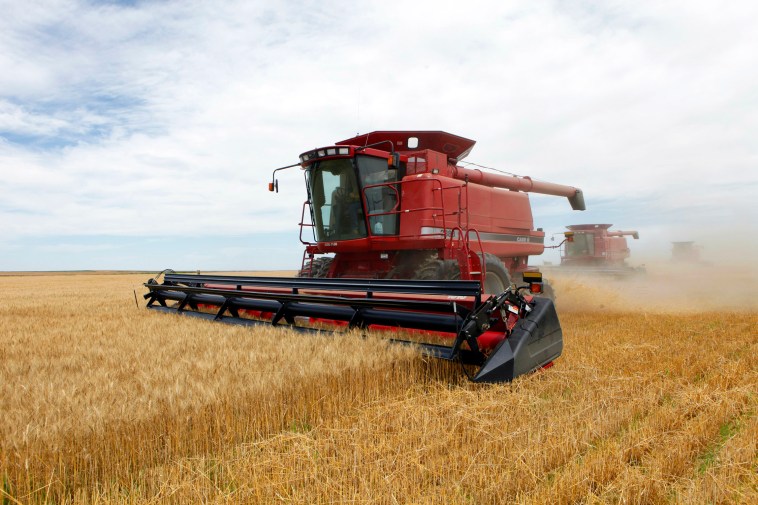There’s a new twist in the story of genetically modified wheat discovered growing rogue by an Oregon farmer. Monsanto, the company which developed the pesticide resistant strain, has now suggested the stalks were intentionally planted.
The discovery of this wheat is a big deal for two reasons. The first has to do with markets. When the wheat was discovered, Japan immediately stopped imports of U.S. Western White wheat, (grown in Oregon), the European Union announced inspections of incoming shipments and wheat futures fell. This leads to the second reason it matters: the politics of genetically modified (GM) food. The markets moved not because of an actual risk to health from the wheat, but because the world doesn’t trust GM products, largely because of a misinformation campaign conducted by activists.
Crops are considered genetically modified if proteins in their DNA were added in a lab instead of through repetitive breeding. Currently, no GM wheat exists for commercial sale. The wheat discovered in Oregon was tested and found to be the same type that Monsanto was developing as part of the approval process for eventual sale. Initially it was theorized that it was left over from those trials. However, the company has since revealed that the seeds are only viable for two years if left in the soil. The last field trial in Oregon was 2001.
Lost in the uproar is the most important fact: This wheat, like all genetically modified crops, is absolutely harmless. The U.S. Department of Agriculture (USDA) has stressed from the beginning, “The detection of this wheat variety does not pose a food safety concern.” What does pose concern is the possibility that this wheat was “planted” by activists. Given activists’ proven history of disregard for the law—vandalizing crops and defacing food packages—there’s legitimate reason to question whether this is another act of sabotage.
Activists are also the reason this wheat is not for sale. Monsanto did not pursue commercialization due to activists’ global misinformation campaign about GM foods. Though it’s not on the market, the wheat is proven to be safe. USDA explained that the Food and Drug Administration had checked out the wheat trait in 2004, concluding that, “this variety is as safe as non-GE [genetically engineered] wheat currently on the market.” This hasn’t prevented the wheat, along with commercially produced genetically engineered crops, from being vilified by activists preferring fear to facts. Within a day of the wheat discovery’s announcement, supporters in Washington State of a ballot initiative to require food with genetically modified ingredients to be labeled used it to support their cause. Now activists have dug up some farmers to sue the seed companies for the discovery of the wheat that their associates very well may have planted.
This comes on the heels of a “worldwide” March Against Monsanto day held at the end of May. Members of the public who have fallen for false claims that genetically engineered food is harmful turned out, carrying signs at rallies with slogans like “I am not an experiment” or “Malevolent Obtuse Nincompoops Simulating Annihilating Nature w/Tragic Outcomes (Monsanto).”
Reason interviewed rally attendees in Los Angeles who cited internet rumors such as GM crops causing birth defects as the reason for their opposition to the technology. These claims are not backed by science. It is common for activist groups to distort science under the guise of a health campaign to advance an ideology.
Activists’ disregard for facts extends even to the number of people who showed up to “March Against Monsanto.” Though as many as 2 million protestors worldwide have been cited as turning out on the day, eyewitness reports and local news stories belie the number. For that claim to be true, an average of 5,000 people would have needed to rally at 400 locations. Yet the “official” number of locations varied, from 250 to over 400, with few locations even coming close to the average. For example, organizers in Portland, Ore. claimed 10,000 people showed up. News reports estimated around 800. Only five people populated the march in Palm Springs, Calif.
Inflated numbers aside, it’s clear that activists continue to spook the population with unsupported claims about GM crops. Seed companies have all but stopped R&D into modified wheat precisely because of misconceptions about GM in the wheat marketplace. We are years from seeing an approved product hit the marketplace. In the meantime, activist-perpetuated fictions must be checked.
America’s farmers will need to produce about 75 percent more food per acre by 2020 in order to help feed the more than 8 billion people the United Nations expects by 2030. They can’t do that without the most advanced technology. Breakthroughs in crop technology have included corn that produced even during last year’s drought conditions. GM crops have increased yields in developing countries like India or nations on the continent of Africa. Small-holder farmers benefit the most from crop technology. Developing countries grew 52 percent of genetically engineered crops worldwide in 2012. These nations gained $10.1 billion in economic benefits from these crops alone, but as importantly, fewer people went hungry.
The other 48 percent of GM crops were grown by developed nations like the United States. They have been grown for years in the United States. Ninety-three percent of soybeans and near 90 percent of corn produced domestically is genetically engineered. Over the past 15 years, roughly 2 trillion meals containing genetically modified ingredients have been eaten worldwide by hundreds of millions of people. Not a single person has gotten sick or had an adverse reaction to food produced through this technology.
In the case of the rogue wheat, USDA has been clear. “This is not a food or feed safety issue,” said President Obama’s Acting Deputy Secretary of Agriculture Michael T. Scuse.
But it may be an issue of sabotage.
Jeff Stier is a senior fellow at the National Center for Public Policy Research in Washington, D.C., and heads its Risk Analysis Division.
Frankenfood? Mutant wheat not a health threat

